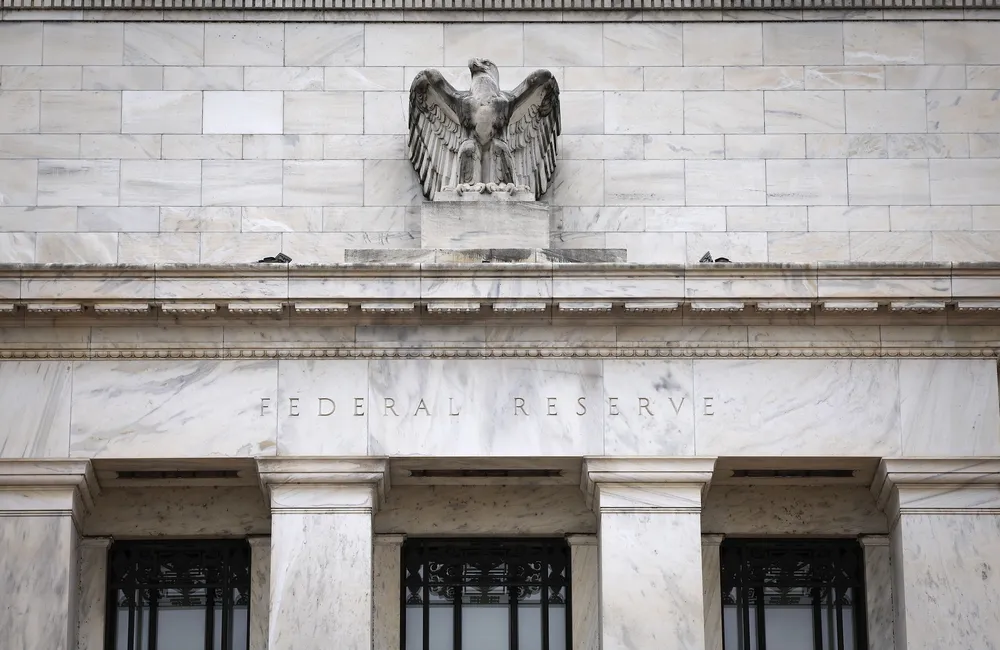Almost half of the underlying stocks in the US Market Index of which, the likes of Tesla (TSLA), Nvidia (NVDA), Facebook parent Meta Platforms (FB), and Netflix (NFLX) are widely held are now 20% or more below their 52-week highs.
While the start of the year has been more volatile than normal, the recent stock swoon isn’t entirely unprecedented. As you can see from the chart below, volatility has been increasing. The CBOE VIX index, which reflects the market’s expectations for equity-market volatility based on the prices of options on the S&P 500 index, has been climbing after a relatively calm summer.
Markets have been rattled by several different issues: the ongoing threat of new coronavirus variants; political instability in Eastern Europe; the abrupt reappearance of inflation; and fears that interest rate increases could cool future equity valuations. The VIX, consequently, has soared into the high 20s lately, versus a 19.3 long-term average.
And actual volatility has also spiked. To their credit, the standard deviation (our measure of volatility) for the US Market Index has also begun trending higher after an up year during much of 2021. For the 12-month period ending Jan. 31, 2022, the standard deviation was 13.2%, compared with 10.77% for calendar 2021.
This volatility has also manifested in more regular losses. Since the market began to get more skittish in November 2021, roughly half of all trading days have ended with losses for the market. There has also been a slight uptick in trading days that close with losses of 1% or more.
It's all relative
But when viewed in the context of longer-run historical averages, recent market performance has not been all that far outside the norm. As the table below shows, market losses are actually quite common.
Negative returns are present on about 45% of trading days. Longer periods lose less often, but still not infrequently. The averages for weekly, monthly and annual returns all indicate that around 42% of weekly trading periods have finished in negative territory and approximately one out of 3 monthly trading periods have closed the books in the red. Over longer stretches of time, annual returns were negative roughly a quarter of the time.
Recent market swings have not been too far beyond the normal range. There have been 34 trading days with negative returns since November 2021, with only three days closing where losses exceeded 2%. Volatility may feel higher partly because we’ve seen a few more-dramatic intraday swings, but also because growth stocks have sustained far more and deeper losses.
Other investors may be spooked by recent market turmoil purely on the grounds that we haven’t seen much of it in the recent past. The bear market unleashed by the novel coronavirus in early 2020 was unusually rapid, and severe but also surprisingly short. After bottoming around 34% lower, between and March 23, 2020, stocks went on to recover completely by August. Following the 2020 rebound, 2021 turned out to be yet another temperate year for equity investors.
It was another quiet year in terms of market volatility, with the standard deviation for the year approximately 20% below its long-term historical average. By a few exceptions (the tech-media-and-telecom correction that began in 2000, the global financial crisis of 2008, and early 2020’s pandemic-led uncertainty), market volatility was also, on average, lower than average over each of the three previous decades. Periodic selloffs that deserve position reduction are perfectly normal based on historical experience.
While we may look back and realize some areas got frothy and turned into bubbles, and that overall market valuations may have been too high, in general the market corrects itself over longer time frames; the occasional downturn is one of the ways the market works out the excess. As we departed 2022, the market overall was trading at a 5% premium to the aggregate fair value from equity analysts. Valuations now look more reasonable after the recent drop.
The pathway forward may continue to be bumpy
While valuation risk is seeming less of a problem, turbulence in the market can’t guarantee a quick resolution either. It’s a cliché to say we’re in unprecedented times, but we really are in a period of flux and regime change. The previous three decades (1991-2020) were characterised by falling interest rates and benign inflation, a gift for both stocks and bonds. Both measures, however, are now turning around. Having run well below average for years, inflation has sped up in recent months, reaching a 7% annualised rate, the highest in 40 years. The US Federal Reserve has indicated that it will start lifting interest rates as soon as this year to rein in inflation and yields on the 10-year Treasury bond have already crept higher in anticipation.
Such a fundamental regime change for both interest rates and inflation would have major implications for many asset classes, and it could take time for the market to adjust to a world that bears little resemblance to what most investors have been raised on. Indeed, many previously persistent trends have already seen dramatic reverses over the last several months. Market leadership has changed hands from growth to value; from tech stocks to energy, commodities, and other sectors; from momentum names to calmer factors like value, yield, and low volatility. But with stocks and bonds both down, that once-reliable 60/40 portfolio has lately caught more of the downside than we have assumed in recent decades.
What it means for your portfolio
Also, we should note that in the long run, most long-term investors actually do not have to worry too much about market turmoil. The risk of permanent capital loss, or not achieving one’s long-term financial goals, is far greater.
Given the turbulence in the market, as Christine Benz points out, investors who were taken aback might want to step back as well, to check whether their original investment plan still makes sense. If you’re nearing retirement, for instance, you may have to de-risk your portfolio to help avoid starting to withdraw during an unfavorable sequence of returns.
If you’ll access your portfolio within the next few years (to fund big-ticket items like a house deposit or tuition fees), or if you’re likely to sell if things worsen, those can be good reasons to review your portfolio’s asset allocation, too. However, if your portfolio’s mix of asset classes is still appropriate given your risk tolerance and time horizon, you should tune out the noise and avoid making drastic changes: keep calm and carry on.
























